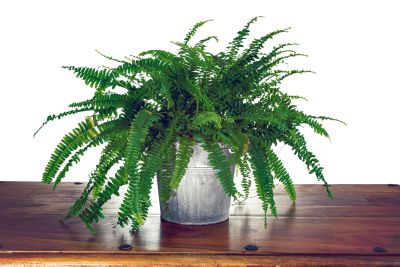How Do Ferns Purify Air?
The ability of ferns, and some other plants, to remove pollutants from air, soil, or water is called phytoremediation. Ferns and other plants are able to absorb gases through their leaves and roots. It is the microorganisms in the soil that help to break down many VOC (volatile organic compounds). Around the root system, there are many fungi, bacteria, and other microbes. These organisms not only help break down nutrients for plant growth, but they also break down many harmful VOCs in the same way.
Using Ferns for Air Purification
Purifying fern plants should be part of any home. Boston ferns, in particular, were one of the best plants for indoor air purification. Boston ferns were found to be excellent at removing a variety of indoor air pollutants including formaldehyde, xylene, toluene, benzene, and others. It was found to be the best at removing formaldehyde. Formaldehyde is emitted from a variety of common indoor objects such as particleboard, certain paper products, carpets, and other sources. As far as care for Boston ferns goes, they enjoy growing in consistently moist soil and love higher humidity. They don’t need terribly bright conditions to do well. If you have room in a bathroom, this may be the perfect environment to grow these and other ferns indoors. A phenomenon known as Sick Building Syndrome has resulted from two factors. Homes and other indoor spaces have become more energy-efficient and air-tight over the years. In addition, there are more and more man-made and synthetic materials that are off-gassing a variety of harmful compounds into our indoor air. So don’t be afraid to add some Boston ferns and many other plants to your home and other indoor spaces. Purifying fern plants can be a valuable addition to any indoor space – both to help purify increasingly toxic indoor air and to help provide a peaceful indoor environment.
